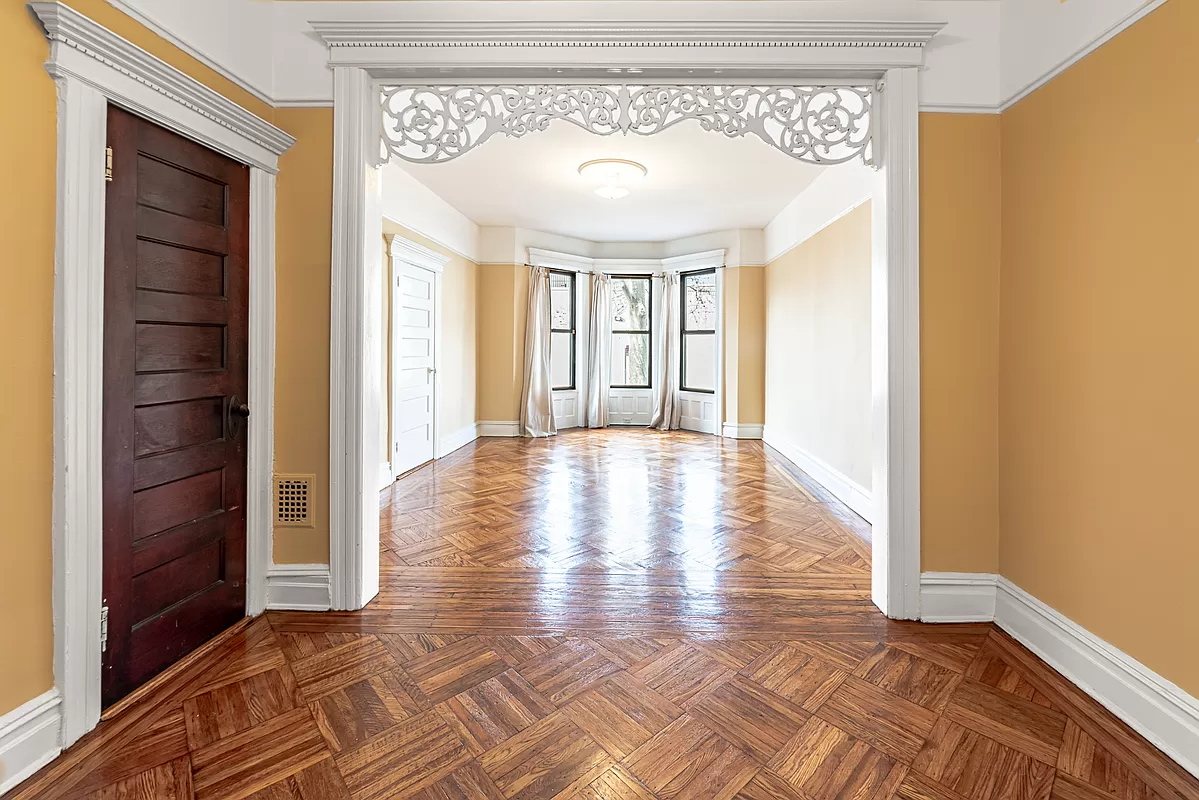Building of the Day: 37-53 Linden Street
Editor’s note: An updated version of this post can be viewed here. Unfortunately, our columnist is having computer problems today, so we are republishing a BOTD about some of our favorite Brooklyn buildings. [nggallery id=”56423″ template=galleryview] Brooklyn, one building at a time. Name: Row Houses Address: 37-53 Linden Street, between Broadway and Bushwick Avenues Neighborhood:…
Editor’s note: An updated version of this post can be viewed here.
Unfortunately, our columnist is having computer problems today, so we are republishing a BOTD about some of our favorite Brooklyn buildings.
[nggallery id=”56423″ template=galleryview]
Brooklyn, one building at a time.
Name: Row Houses
Address: 37-53 Linden Street, between Broadway and Bushwick Avenues
Neighborhood: Bushwick
Year Built: 1888
Architectural Style: Queen Anne
Architect: Frank Keith Irving (aka F.K.Irving, F. Keith Irving)
Other buildings by architect: 1332 Bergen St, CHN, 130-132 Prospect Pl, Prospect Hts
Landmarked: No, but should be, as soon as possible.
The story: These are exceptional houses. Everything about them says excellent residential architecture for an urban setting. The scale is small and low, matching the other houses on the block, also built around the same time, and contextual with the neighborhood. The side streets of Bushwick are of much smaller scale than Bushwick Avenue itself, which is a combination of large mansions and taller row houses and tenements. The brick is warm and evokes a sense of comfort and home. The houses are wide enough for comfort, with generously spaced windows. The dog leg stairway adds mass to the façade, and allows for the use of some great artistic and whimsical ironwork, which is remarkably intact throughout the group. And then we have the rest of the ornament.
The American Victorian aesthetic was greatly influenced by the English Arts and Crafts Movement, begun in the 1860’s by William Morris and his friends and associates. Central to their philosophy are a love of beauty and pattern, and an appreciation of craftsmanship and artistic talent, a philosophy that would be come to be called the Aesthetic Movement, where beauty for beauty’s sake was treasured. This movement would cross the ocean and be manifested in many, many ways, and in architecture, that love of surface ornament and craftsmanship would be realized in the many kinds of ornament used in Romanesque Revival and Queen Anne architectural styles. Here we have a wealth of terra-cotta, fine ironwork, stained glass, and pressed metal cornices, all of great beauty, and unusual in their wealth of application in middle class homes.
The terra-cotta is a standout, and these buildings are another testament to this building material’s strength and durability, as well as ability to be sculpted into so many intricate and beautiful patterns. The stained glass is more subtle, in the transoms above the door and windows, but adds to the charm. It must be a joy to climb those stairs that dance in wrought iron, and who wouldn’t smile while looking at the pressed metal cornices, alternating with Classical swags, and geometric designs reminiscent of Native or African patterns. What an unusual and inventive combination! The block is anchored by the corner house on Bushwick, which is similar, yet much more. We’ll look at that one in more detail on Thursday, to coincide with the wrap up of architect Frank Irving’s story, which is the topic of today’s Walkabout. Please check it out. His career is quite surprising.
Finding the architect of these buildings has been the goal of Brooklyn’s architectural historians for the last 30 years. The discovery was made this year by a group of 11 students in Columbia University’s graduate program in Historic Preservation, who conducted a masterful study of Bushwick Avenue and surrounding blocks, with the goal of historic district(s) status, as well as preservation, urban re-investment and community empowerment. They were under the able direction of Professor Ward Dennis, who sent me the link to the Bushwiki website created by the students. It’s a great study, extremely well done, and an important document for historians, preservationists, and the people of Bushwick. Professor, I hope you gave them all A’s. http://bushwick-studio.wikispaces.com/









What's Your Take? Leave a Comment